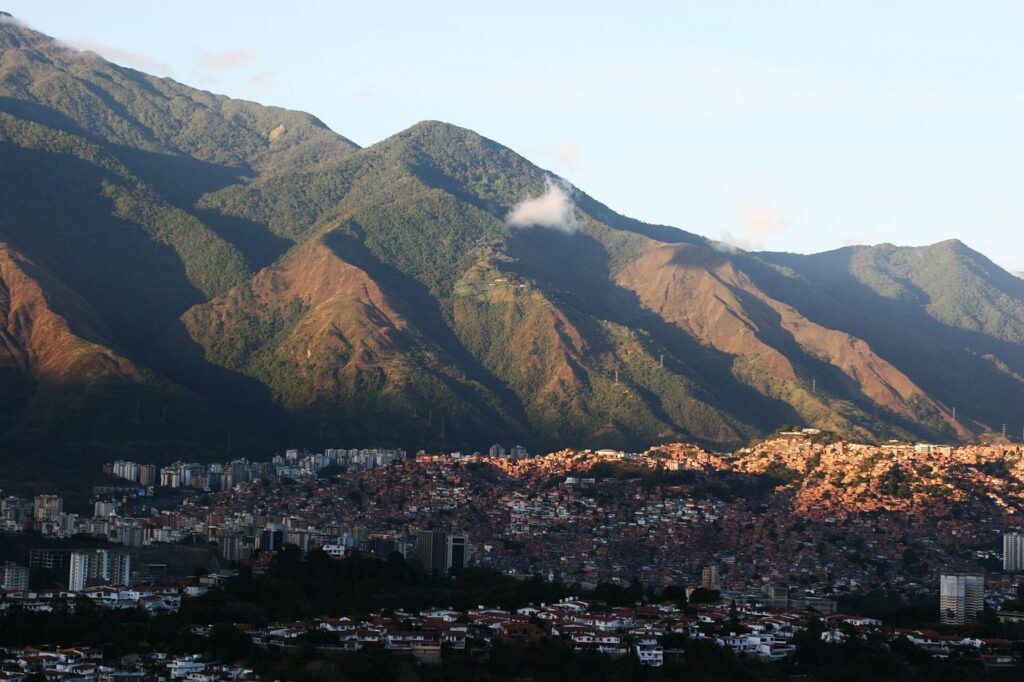Venezuela coffee beans are an essential part of everyday life for many Venezuelans, a ritual that starts in the morning and continues through midday, evening, or whenever the craving strikes. But have you ever wondered about the history behind this beloved brew in Venezuela? If not, grab a cup of “guayoyo,” Venezuela’s traditional black coffee, and join us as we explore the rich story of these beans and the deep-rooted traditions that make them so special.

The History of Coffee in Venezuela
Coffee arrived in Venezuela around 1730 when Spanish missionaries planted coffee plants near the Caroní River. By 1784, coffee plantations began flourishing in places like Chacao, where the well-known Hacienda La Floresta marked the beginning of large-scale cultivation. Over the years, coffee gradually replaced cacao as Venezuela’s leading export, significantly impacting the economy, particularly in the Andean regions such as Mérida.
The coffee boom opened trade routes, enhanced infrastructure, and established Venezuela as a major coffee exporter to Europe and North America.
Venezuela’s prominence in the global coffee market peaked in the early 20th century, making it one of the top three coffee producers worldwide, behind Brazil and the Dutch East Indies. However, from the 1920s, the country’s focus shifted toward oil production, and coffee’s importance began to wane. By the 1980s, declining coffee prices, government regulations, and competition from other nations further reduced Venezuela’s role in the international coffee scene, increasing the country’s reliance on imports to meet domestic demand.
Flavor Profile of Venezuela Coffee Beans
The best coffee beans from Venezuela are known for their distinctively sweet flavor, often highlighted by subtle fruity and nutty notes. These coffees are typically characterized by a mild acidity, making them smoother and more approachable than other South American coffees. The richness in texture and a full-bodied mouthfeel contribute to a satisfying drinking experience, where each sip reveals a complex yet balanced flavor profile that reflects the diverse growing conditions across Venezuela’s coffee regions.
This combination of sweetness, low acidity, and a rich, velvety feel sets Venezuelan coffee apart, offering a unique taste that coffee enthusiasts should explore.
Coffee-Growing Regions in Venezuela
Coffee cultivation in Venezuela spans almost the entire country, with significant production across various states. In 2020, Venezuela produced approximately 500,000 bags of 60 kg each, but coffee plants are now quite rare, and although hopes exist for a revival, this seems unlikely in the short term.
1. Western Region
This region produces a large percentage of the country’s coffee. Export grades often bear the name of the specific state where they were grown, such as Táchira, Mérida, or Zulia, rather than the broader region. Coffee from this area is sometimes compared to beans from neighboring Colombia.
- Altitude: 1000-1200 m
- Harvest Season: September to March
- Varieties: Typica, Bourbon, Mundo Novo, Caturra
2. West Central Region
This region includes the states of Portuguesa and Lara, among Venezuela’s main coffee-producing areas, as well as Falcón and Yaracuy. The best varieties are considered to come from this part of the country, relatively close to the Colombian border. These beans are commonly known as “Maracaibos,” named after the port from which they are exported.
- Altitude: 1000-1200 m
- Harvest Season: September to March
- Varieties: Typica, Bourbon, Mundo Novo, Caturra
3. North Central Region
A smaller portion of Venezuela’s coffee production originates from the states of Aragua, Carabobo, Federal Dependencies, Miranda, Cojedes, and Guárico, located in this region.
- Altitude: 1000-1200 m
- Harvest Season: September to March
- Varieties: Typica, Bourbon, Mundo Novo, Caturra
4. Eastern Region
This region includes the states of Sucre, Monagas, Anzoátegui, and Bolívar. Interestingly, some coffee labeled as “Caracas” (named after the capital) is produced in this region.
- Altitude: 1000-1200 m
- Harvest Season: September to March
- Varieties: Typica, Bourbon, Mundo Novo, Caturra
Guayoyo: The Essence of Venezuelan Coffee
Guayoyo is one of the most iconic coffee preparations in Venezuela, embodying the simplicity and tradition of the country’s coffee culture. Similar to filtered coffee but lighter, guayoyo is made by pouring hot water over finely ground coffee, creating a smooth, aromatic beverage that’s milder than an espresso or traditional black coffee. This light brew is perfect for any time of the day and is a staple in Venezuelan households, enjoyed as part of the daily routine.
Guayoyo is not just a symbol of hospitality; it’s a way to connect with Venezuela’s cultural roots, where coffee is more than just a drink—it’s a daily ritual that brings generations together.
Conclusion
Venezuelan coffee beans are known for their outstanding quality, driven by the country’s diverse climates, high-altitude farms, and nutrient-rich soils. These factors combine to produce beans with a distinctive balance of sweetness, smooth acidity, and a rich, full-bodied texture. Although Venezuela’s coffee industry has faced significant challenges, dedicated farmers continue to uphold traditional cultivation methods, ensuring that the quality remains high. Through careful hand-picking and processing, Venezuelan coffee retains its complex flavors and unique characteristics, making it a hidden gem for coffee enthusiasts seeking a premium, authentic taste experience.
“If you enjoyed this article, you might also be interested in learning about Colombian Coffee.
